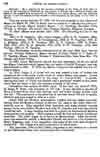Mason is located in the northern part of Deerfield Township on the Cincinnati Northern Railroad, about seven miles from Lebanon and twenty-one from Cincinnati. It has been a well-known point on the Cincinnati, Lebanon & Xenia Turnpike. It is on Muddy Creek, in an undulating, fertile and populous part of the county, and is remarkable for its healthy location and the enterprise and progressiveness of its inhabitants.
This place was laid out August 18, 1815, by Maj. William Mason, but was called at that time Palmyra. Other additions were made to the town in 1832, 1835 and at other periods. These have been known as the Mason, Lamb, Wikoff, Cox and Bennett Additions.
When the post office was stationed here and named Palmyra Post Office, it was found that another post office of that name was in the State, and it behooved the people to make a change in the name. A meeting was called and a committee appointed to adopt such a name as was deemed best Some wanted the name Van Buren, in honor of the newly elected President; others wanted the name Mason, in honor of him who first laid out the town. The name Mason was finally given to both town and office, which met the general approval of all. The following is from the act to incorporate the village of Mason:
 Page
Page646
This was passed January 22,1839, but was not accepted by the citizens of Mason till March 22, 1840, at which time an election of officers took place, resulting as follows: Mason Seward, Mayor; J. G. Paulding, Recorder; Felix Welton, L. Murphy, Abe Duvall, Ezra Dawson, Ephraim Meighan, Trustees.
No other officers were elected until 1850. The following is a List of the Mayors:
1850, D. W. Vandyke; 1851, James Fugate; 1852, D. W. Vandyke; 1854, Thomas Crawford; 1856, R. H. Cunningham; 1858, D. W. Vandyke; 1860, E. L. Meighan; 1862, D. W. Vandyke; 1864, D. W. Vandyke; 1866, W. Felter; 1868, 1870, 1872, R. H. Bennett; 1874, 1876, D. W. Vandyke; 1878, Ben Welton; 1880, D. W. Vandyke.
The Postmasters since the establishment of the post office have been as follows: William Kirkwood, Mason Seward, William Dodds, A. C. Bates, D. W. Vandyke, Mason Seward, Thomas J. Blackburn, Mrs. Sena Ross, Mrs. Flo Sausser and Felix Welton.
In 1862, James McCormick started the first newspaper, which was called the Mason Democrat, which passed into the hands of Daniel Flanagin, and was discontinued in 1864. In 1878, the Mason Vanguard was started, but did not long continue.
In 1814, Judge J. D. Lowe laid out and platted a town of sixteen lots situated at the cross-roads, a mile north of where Mason now stands. It was named Unity, but usually went by the name of "Lowe's Town." A church, bearing the name of Unity was erected, and a graveyard started at this place, but to-day the latter is the only remnant existing of the town.
Gainesboro was another ill-fated place. It was laid out June 26, 1815, by Ralph W. Hunt, and consisted of 134 lots. It was situated at the site of Hunt & Lowe's flour, wool and carding mill, and where King's powder mills now are. The population of the place was at one time about 150, but it rapidly declined and soon ceased to exist as a town.
About 1840, two Mormon missionaries, a father and son, named Lamaree, hailing from the Mormon Church at Nauvoo, Ill., came to the place where Socialville now is. They preached their doctrines and made several converts among whom were Arthur Monfort and wife, Dr. Johnson and wife, who finally joined the sect. A large meeting was held in a grove, at which several Mormon missionaries were present. More persons joined the sect and much excitement prevailed. The place began to be known as Mormontown. After the excitement had somewhat abated, a Methodist Church was built on a lot donated by Henry Hageman, and, at his suggestion, the name of the town was changed to Socialville. The village now has a population of about sixty.
The post-town, Twenty-Mile Stand, originated in the location of a tavern on the Chillicothe State road, twenty miles from Cincinnati.
